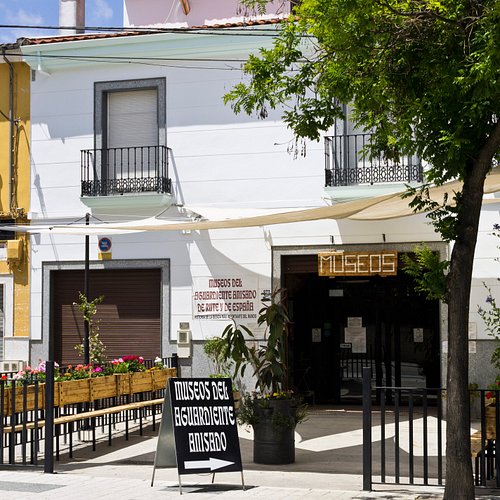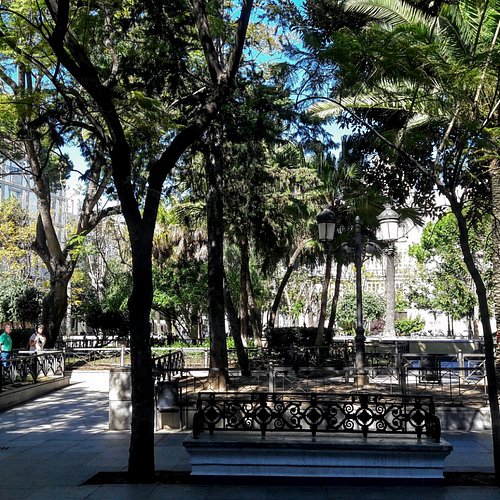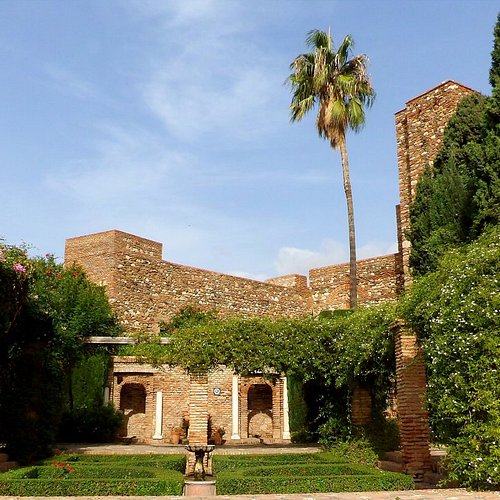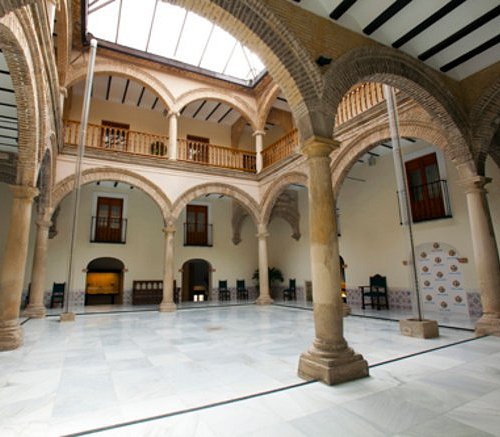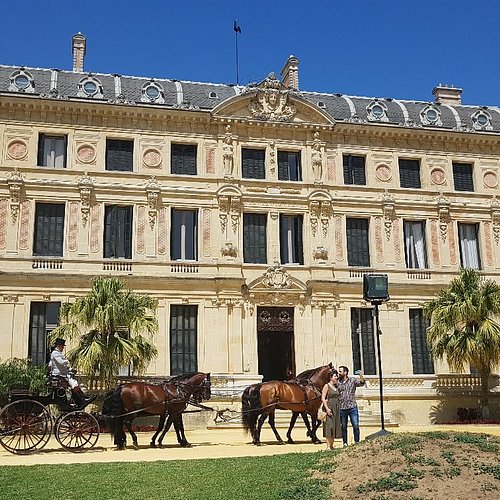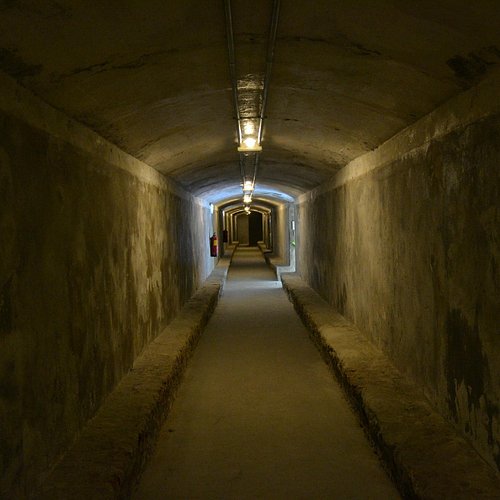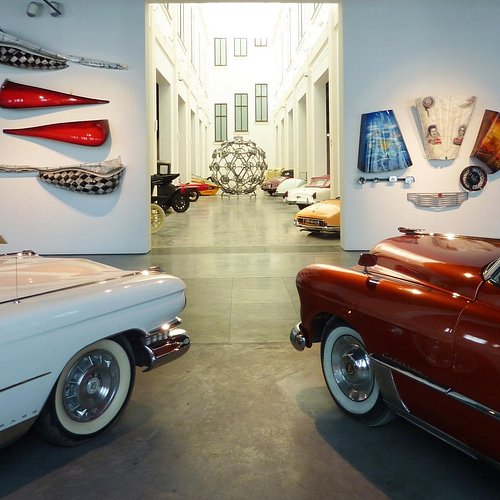What to do and see in Andalucia, Spain: The Best Museums
Discover the best top things to do in Andalucia, Spain including Los Museos del aguardiente anisado de Rute y Espana, Museum of Cadiz, Alcazaba, Centro Cultural Banos Arabes, Museo del Vidrio y Cristal de Malaga, Fundacion Real Escuela Andaluza del Arte Ecuestre, Archaeological Ensemble of Baelo Claudia, Museum of Almeria, Museo Refugio de la Guerra Civil, Museo Automovilistico y de la Moda.
Restaurants in Andalucia
1. Los Museos del aguardiente anisado de Rute y Espana
Overall Ratings
5.0 based on 389 reviews
In Rute are the 'Museums of the aniseed liquor of Rute and Spain', which show, in a first part, the true history of anise in the municipality and, in a second area, that of the rest of Spain, being located in its showcases representations of all the Spanish provinces and even the former national colonies. More than 8,267 original pieces and 6,208 Spanish brands make up the exhibition space of approximately 500 square meters. We are different from everyone. We show new pieces that are not exposed, in situ, since what is exposed is only a small part of the total work done. Likewise, we open showcases, teaching and explaining much of the secrets that are hidden in them. In these Museums, in addition to showing the true history of the most important drink in the world - aniseed brandy, medicinal beverage with 27 healing properties, manufactured in more than 3,000 villages in Spain and more than 10,000 distilleries -, 6,208 brands can be contemplated, and the totality of what has come into existence will be progressively shown. We show the history of the Spanish signage, the glass bottle, the lithographic label, the graphic arts and lithographers, the invoice and the old advertising (now known as "marketing" or marketing). In the same way, the Museums of the aniseed brandy offer a selection of artisanal and natural spirits and liquors of the brand 'La flor del fresno', made 100% in their own way in Rute with original recipes from 1880, highlighting the coffee liqueur 'rosolíz' or distilled sweet anise, among others. Also, our permanent exhibition on the history of the toy is free of charge. A representation of the countries where best toys have been manufactured and the brightest brands in Spain are contemplated therein. We show, thus, toys that reach 130 years old, most of them in perfect operation and accompanied by their original packaging. For the Christmas campaign, by restructuring the contents of the showcases, we show a series of new toys and others that we have replaced. Are you going to miss it? Visit a unique space in the world in the heart of Andalusia! > After the established time, you can make your appointment by calling us.
Reviewed By Navigate782290
This is an amazing exhibition and Pedro gave us an incredible amount of information. He was an enthusiastic and very knowledgeable guide. Pedro did not speak much English but we understood most of what he told us although our Spanish is not of the best, and he is a goldmine of information. There are some very intriguing things in this exhibition and it was fascinating to see how much history is stored in this museum. Well worth a visit and there is a tasting at the end of your visit. The coffee Anis is really nice. A place not to be missed.
2. Museum of Cadiz
Overall Ratings
4.5 based on 598 reviews
Archeology, fine arts and ethnology museum. Important collection of Phoenician World and Murillo, Zurbarán, Rubens, Zuloaga, Sorolla, Miró... paintings
Reviewed By Pensionado - Castricum, The Netherlands
This museum has a very interesting archaeological section with finds from all periods showing that the region around Cádiz was inhabited from Neolithic times on, making Cádiz the oldest, permanently inhabited city of Europe. Especially the unique Phoenician finds are worth seeing including two marble anthropoid sarcophaguses. On the first floor is the fine art collection with a room dedicated to the Spanish painter Zurbarán and another to Murillo. For everybody interested in ancient culture and art, this museum should not be missed.
3. Alcazaba
Overall Ratings
4.5 based on 10,852 reviews
Built between 1057 and 1063, this is probably the most important military fortification remaining from the Hispanic-Arabic period.
Reviewed By Fussybut - London, United Kingdom
This Moorish castle in the centre of Malaga is a must see for any visitor - not only offering unparalleled views over the port, cathedral, park and city but stretching over to the mountains behind. Breathtaking rooms and decoration, the usual fantastic Mozarabic flowing water features complement the week preserved and restored structures - what an elegant and massive fortress. There’s a nice little bar half way up the route and best of all it costs little more than £2 less for concessions.
4. Centro Cultural Banos Arabes
Overall Ratings
4.5 based on 702 reviews
Reviewed By Freedom217339
So glad we discovered this interesting museum. From the wonderful restored Arab baths in the basement to the roof top terrace and cafe with some of the best views over Jaén and much more in between, this museum is definitely worth a visit.
5. Museo del Vidrio y Cristal de Malaga
Overall Ratings
4.5 based on 1,740 reviews
The museum is located in a crefully restored 18th century house, where we can browse through the history of humanity by means of the glass. Opening hours: Tuesday to Sunday, from 11am to 7pm.
Reviewed By Jeannie501 - Fuengirola, Spain
A beautiful private collection of amazing glass items from all over the world, stunning pieces that you can actually hold and feel their beauty. With a guide to tell you about their most amazing pieces of glass item s
6. Fundacion Real Escuela Andaluza del Arte Ecuestre
Overall Ratings
4.5 based on 2,010 reviews
The Royal Andalusian School of Equestrian Art Foundation, in Jerez de la Frontera, is famous all over the world for its show called "How the Andalusian Horses Dance", a unique exhibition of horsemanship which both exhibits and summarises the work which the institution has carried out since its establishment. Although the show "How the Andalusian Horses Dance" may be considered the highest attainment of the School's work, there are other aspects which are regarded as equally, or even more important, for the Institution. Among these, we would like to highlight its role as a social and cultural vehicle for our equestrian heritage, the selection and promotion of horses, the training of Haute Ecole riders, the preservation and promotion of Classical and Country Dressage (Doma Vaquera), maintaining the prestige of our horsemanship, the breed of our Spanish horses, our traditions and culture. Furthermore, the show enables the Royal School to play host for the Province of Cadiz and to act as ambassadors abroad on annual tours to various foreign countries. In addition to the show, you might enjoy a visit to our training facilities as well as the Museum of Equestrian Art and the Carriage Museum.
Reviewed By GINNIELincolnshire - Boston, United Kingdom
A wonderful visit to see the horses in training, the palace lived in by the Sandeman family, the carriage museum and stables and best of all, the show - 'How the Andalusian Horses Dance'.
7. Archaeological Ensemble of Baelo Claudia
Overall Ratings
4.5 based on 1,233 reviews
Closed Mondays in July, August and September
Reviewed By perle369 - Malaga, Spain
This superb early Roman city is very well preserved in relation to other cities whch have been built over. It has everything, the forum, the ships, the great Roman highway and city gates, columns, the magnificent amphitheatre, the saltng pits near the beach, temples, necropolis, statues, viaduct, baths etc etc. The layout is clearly visible and work is still in progress as it will be for years to come. The visitor centre and museum attached in a beautiful building. Some of the exhibits were not available due to winter refurbishing but we could not coomplain as their was plenty to see. One of the statues was found as late as 2012 so there is obviously more to come. We will be back. Our one criticism is that the whole site is FREE to view for EU nationals. Why? We would have gladly paid 5 Euros each for the experience. We have noticed this tendency in Spain not to charge for historical venues or very small amount such as 1.80 Euros. Visitor should contribute to the venues as the staff have to be paid and the buildings kept up to standard, never mind funding for more digging and research! The Spanish Government is missing a trick here.
8. Museum of Almeria
Overall Ratings
4.5 based on 214 reviews
The Museum was initially set up in a building on calle Javier Sanz, and shared the site with the School of Arts and Trades and subsequently with the "Celia Viñas" Secondary School. The name, Luis Siret, was added to the museum's name in tribute to the memory of this distinguished archaeologist. The collections and the museum were declared a Historical and Artistic Monument in 1962 (Decree no. 474 of 1 March). In 1979, the museum was transferred to the National Ministry of Culture which decided to adapt the former Colegio Menor de Santa María del Mar as the museum's new home, in 1981. It stands in this same square today. The inauguration took place on 22 October 1982. After that, it was called the Museum of Almería although this only became its official title in 1994. Because of the structural problems due to aluminosis, the building's poor state of conservation led to its closure to the public in 1991, although the museum's internal services continued to function. To reduce the impact of such a prolonged closure as much as possible, two permanent exhibitions were opened in 1995, with a small representative show of Prehistory and Ancient History in Almería outside the museum site, in two places at the Provincial Historical Archive and the Villaespesa Library. At a later date, a single exhibition was organised in the Villaespesa Library called "Archaeological Testimonies in the province of Almería". The Ministry of Culture decided to erect a new building on the same plot following the demolition of the old site. In the meantime, the inside areas were moved to buildings belonging to the Provincial Council, in the former Colegio Virgen del Pilar. Some of the storerooms were also moved there. The remaining items in storage were moved to the former Psychiatric Hospital. Architects Ángela García Paredes and Ignacio García Pedrosa were responsible for designing the new museum site. The result is a building in contemporary style. Its architectural design is primarily intended to provide a strategic makeover of the museum's location. The block, where it used to be, has been reorganised following the creation of a large public square that looks over the city, with an extensive gardened area intended as an area for relaxation. Inside, the spaces are impressively arranged to combine light, contrasting heights and aesthetics in attractive woodwork. The central space of the hall and double stairs give structure to the approach adopted in the architecture and museography, helping visitors to move freely on various themed tours. The building was awarded the PAD and ARCO 2004 prizes and was a finalist in the FAD awards in 2005. On 23 March 2006 the Prince and Princess of Asturias inaugurated the new site and opened the Museum of Almería to the public.
Reviewed By KL569 - Leeds, United Kingdom
Laid out over 4 floors, with an enormous pillar reaching to the ceiling which represents the layers of history. The roman times are almost at the top! There are some videos with music which tell of the history of Almeria in an interesting way without using language; very well done. Small children were entranced by the moving patterns of one which was projected onto the floor. Most interesting to me were Islamic gravestones from 12th & 13th century, beautiful pottery & burials in pots. As well as being in Spanish, the description boards are in English which has been translated very directly, sometimes to our amusement or bafflement. It added to the experience. It was very quiet when we went on Sunday morning. Highly recommended.
9. Museo Refugio de la Guerra Civil
Overall Ratings
4.5 based on 894 reviews
The network of sherlters meant the excavation of 2.80 miles of underground galleries, at more 29 feet deep, and 67 manholes for access. This system protected about 35,000 poeple out of a total of aproximately 50,000 inhabitants the city had those years. The main tunnel of the refuge goes underneath the "Paseo de Almeria", with a main passage six and a half feet wide and two benches along each side for seating. The Refuge of Almeria has become Europe's largest opne to the public in the present day. Its recovery as a cultural and historical element, its symbolism as witness to the Spanish Civil War, and its architectural-engineering value, place this works as one of the most important built in Almeria during the twentieth century, as well as it constitutes one of the most significant elements of the cultural heritage and historical memory of the city. The visit takes one hour, always in a guided tour in spanish, but we star the visit with a video with english subtitles.
Reviewed By ChrisJanC
We arrived for 10am, had not prebooked tickets so unsure if we could join the group. Luckily, we joined the group and made our way down the tunnels. Incredible these were hand dug by the local people for the civil war refugees, and after, it was used for the WW2 bombardment. They are fairly well lit, and do not feel really closed-in. 35,000 people sheltered in the tunnels, just incredible that they could find safety here. There is an operating theatre and medical room, also a store room and some others that are unavailable to enter. It is a good walk, about 1km with the tour guide explaining as you go. The tour is only in Spanish currently, however the guide was really helpful talking to us after, and if we had any questions along the way. The re-enactment of the bombardment through the lighting & speakers made it seem almost real! It must have been very frightening, but also a sense of safety and unity. Well worth a visit.
10. Museo Automovilistico y de la Moda
Overall Ratings
4.5 based on 3,245 reviews
An extraordinary private collection with 6,000 square metres of exhibition space, it is displayed 13 thematic areas that describe the different styles that are characteristic of the artistic evolution from the 20th century. Almost a hundred cars, restored at the highest level, that go along with more than 200 haute couture pieces and contemporary art designs that belong to an only person. Let yourself be amazed by our facilities, where you can celebrate all sort of events.
Reviewed By GranZorro - Zug, Switzerland
The same complex - a converted tobacco factory - that houses the Russian Museum also contains this unique place. It is a combination of automobile history - with emphasis on its beginnings and the classic cars - with the female fashion of the times as well as with history, highlighting the famous people who owned or drove several of the exhibits. Very much worth a visit, even for those who are not fans of cars or lovers of fashion.

